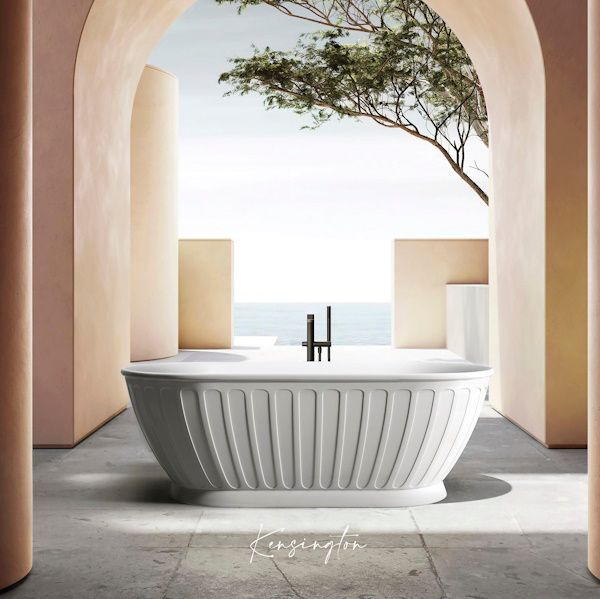FAQs
Installation FAQs
Wall-hung vanities must be securely fixed to a load-bearing wall or a wall with adequate structural reinforcement. Installation on plasterboard alone is not recommended without suitable backing. Always consult your builder or installer to ensure the wall can support the weight of the vanity. Yes. All tallboys, laundry cabinets, and similar items must be securely fixed to the wall to prevent toppling, which can cause serious injury. Installation height is generally based on personal preference and ergonomic comfort. As a guide, the top of the basin is typically installed at around 850–900mm from the finished floor level. Shaving cabinets are usually positioned at eye level, but make sure to align with any plumbing points and consider user height for accessibility. Yes. Internal plumbing that is not carefully positioned can obstruct drawer operation. Ensure the plumbing is planned and installed to avoid interfering with internal drawer space. Consult your installer or plumber before finalising placement. Yes, but cuts should be minimal and made carefully to avoid weakening structural support or voiding warranty. Always consult installation guidelines before making modifications. Stone tops are heavy and fragile—always handle with care. Ensure the cabinet is level and properly supported before placing the top. Use a neutral-cure silicone to fix the top in place and avoid excessive pressure during installation to prevent cracks. Do not overtighten tapware or waste fittings. There are a few common reasons why vanity drawers may not align or sit correctly after installation. We recommend reviewing the installation instructions for drawer alignment adjustments. If issues persist, please contact our customer support team for further guidance. If your shaving cabinet door isn’t aligned, the hinges may need adjustment. This is a normal part of installation, as the weight and placement of the door can shift slightly over time. Doors removed and reinstalled during installation can also require realignment. If the LED light is not turning on despite power being supplied, it's possible that a connection became loose during transit or installation. We recommend having a qualified electrician check that all connections are properly secured, especially the LED wiring. Refer to the installation guide for further detail. If the issue persists, contact our customer support team.Can I install a wall-hung vanity on any type of wall?
Do tallboys, laundry cabinets, and similar items need to be fixed to the wall?
How high should I install my vanity or shaving cabinet?
Can plumbing interfere with drawer function?
Can I cut into the cabinet to accommodate plumbing?
What do I need to consider when installing a vanity with a stone top?
Why don’t the vanity drawers align or sit properly after installation?
Installation GuideMy shaving cabinet door is not aligned.
There is power traveling through the LED shaving cabinet, however, the LED light is not turning on. What should I do?
Design FAQs
Slight variations in colour and finish are normal between ceramic, stone, and painted or laminated cabinetry. Differences in how each surface reflects light can make them appear mismatched even though they are designed to complement each other. Our stone tops are made using engineered stone, which includes natural stone elements. Subtle differences in pattern, veining, or grain are expected and add to the natural aesthetic of the product. Yes. Our products are designed with complementary finishes and proportions to give you design flexibility. Always check dimensions, colour tones, and fitting compatibility to ensure a cohesive look. Lighting conditions affect how colours and finishes appear. Natural light, artificial lighting (warm vs. cool), and surrounding materials (tiles, wall colour) can alter perceived tones. We recommend viewing samples in your actual space if possible. Measure your wall space and consider storage needs, basin style, and the number of users. Wall-hung vanities create an open feel, while floor-standing options offer more storage. Account for door and drawer clearances and plumbing access. Some vanities allow custom handles or finishes. Check specifications or ask your supplier. Swapping handles is an easy way to personalise your space, but ensure replacements don’t impact functionality.Why doesn’t my white vanity match the ceramic basin or stone top?
Why are there small variations in pattern or grain on my stone top?
Can I mix and match different Otti vanities, basins, and tapware?
Why do colours or finishes look different in my bathroom than they did online or in-store?
How do I choose the right size vanity or cabinet for my space?
Can I customise the handles or finishes on my vanity?
Cleaning & Care FAQs
Avoid bleach, acidic cleaners, scouring pads, or abrasive cloths—they can damage finishes on vanities, basins, stone tops, and tapware. Use only mild, non-abrasive cleaners with a soft cloth or sponge. Dry matte black or coloured finishes after cleaning to prevent watermarks. Dry surfaces after use to avoid mineral buildup. For stone, apply a water-repellent sealant. For silicone residue, use a plastic scraper or silicone remover—never metal tools which can scratch. While 304 stainless steel resists rust, marks can appear due to harsh chemicals, minerals, or sitting residue. Clean with mild soap and dry after use. For rust, use a stainless-steel cleaner or scrub with a non-metal scouring pad in circles. Avoid acidic substances. Spray gentle glass cleaner onto a cloth (not directly on the mirror). Wipe gently and dry to prevent moisture at the edges. Avoid harsh chemicals. Ensure good bathroom ventilation. You can also apply anti-corrosion sealant around edges for added protection.What cleaning products should I use on Otti products? Can I use bleach?
How do I clean and care for ceramic basins, stone tops, and vanities?
How can I prevent and remove water spots or silicone residue?
Why is my stainless-steel sink rusting and how can I fix it?
How do I clean my mirrors and prevent edge corrosion?


